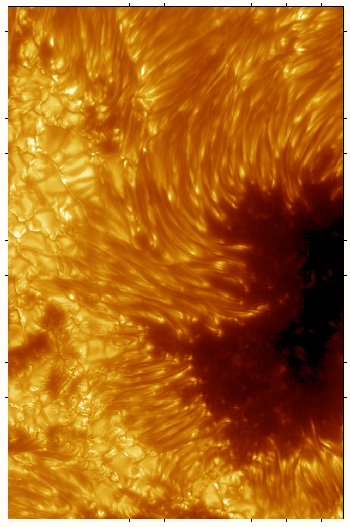The exact nature of solar penumbrae - the bright filaments that surround the dark central regions in sunspots - have long been a puzzle to solar scientists. Now Goran Scharmer and colleagues at the Institute for Solar Physics in Sweden have made new observations that could shed light on this mystery. Their images also reveal new small scale structures which show that many fundamental physical processes on the solar surface occur on lengths smaller than 100 km (GB Scharmer et al. 2002 Nature 420 151).

The Sun’s surface is constantly changing with turbulent convection and magnetic fields interacting to produce fine-scale structures, such as penumbral filaments. Although solar telescopes have greatly improved in the last decade, it is now clear that observations at higher spatial resolutions are needed.
Scharmer and co-workers used the recently installed Swedish 1-m Solar Telescope in the Canary Islands to examine part of the largest spot in the active region “10030” of the Sun. The new telescope has a spatial resolution of 0.12 arcsecs, which is about a factor of two better than previous instruments.
The researchers noticed that many of the penumbral filaments, which are between 150 and 180 km wide, have dark cores themselves and are surrounded in turn by dark umbrae. They also found that these dark cores, which are as yet unresolved, branch into several different cores that can be as little as 90 km across but up to 100 km long.



